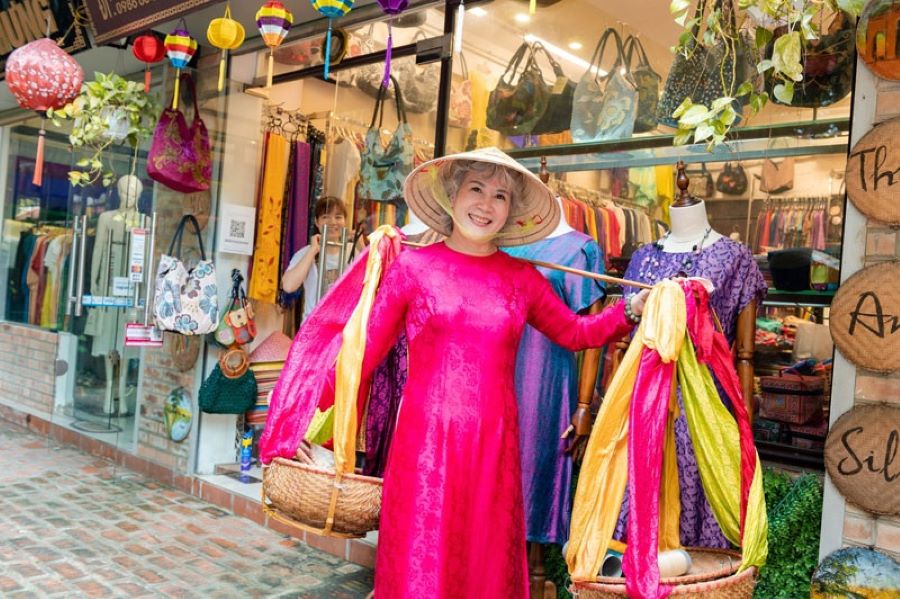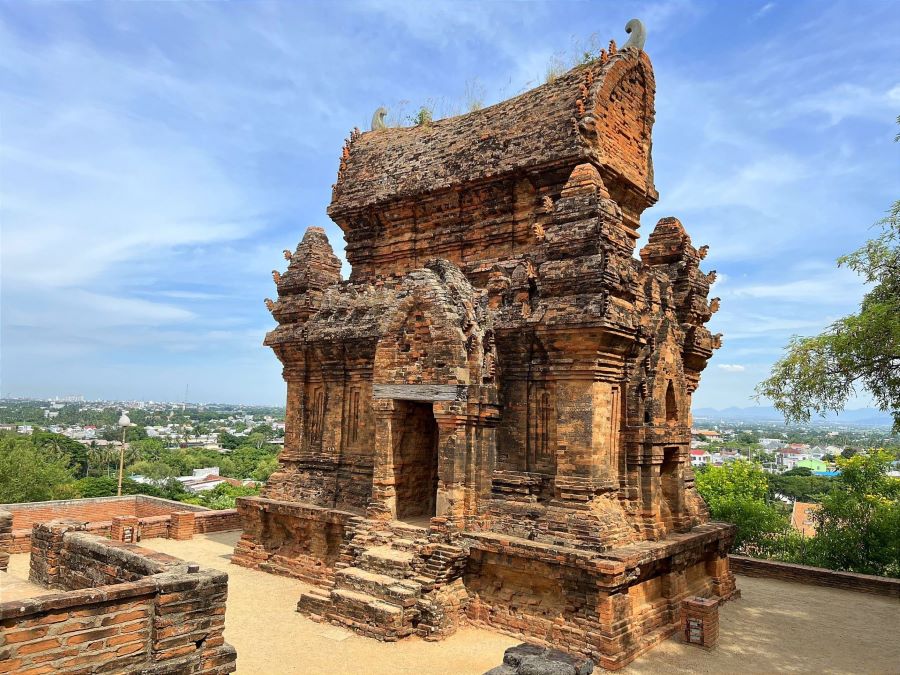The beauty of Vietnam folk paintings
Vietnamese cultural paintings are a vibrant expression of the nation’s culture, spirituality and daily life, preserved through generations in distinctive styles like Dong Ho, Hang Trong, Kim Hoang and Sinh
🎨 A Glimpse into Vietnam’s Artistic Soul
The beauty of Vietnam folk paintings lies in their power to connect generations through simple yet meaningful artistry. These works are more than decoration. They reflect deep communal identity and timeless values shared across regions. Created by rural artisans, they often use humble materials like bamboo paper, natural dyes and woodblocks. Unlike royal art, they emerge from everyday life. They capture people’s bond with nature, gods, ancestors, joy and hardship. You can easily see this when visiting a gallery in Hanoi or browsing a craft stall in Hue. Each painting radiates authenticity and purpose.

Vietnam’s artistic soul breathes life into traditional Vietnam folk paintings and stories
Moreover, common scenes like farming, festivals, and mythical creatures appear with clear symbolic meaning. For instance, during Lunar New Year, families hang them for luck and happiness. They also play a role in ceremonial rituals and preserve folk stories passed down orally. Even today, Vietnam Paintings continue to inspire with their warmth and storytelling charm. Through them, we witness not only beauty but also resilience and faith. As a result, these artworks remain a proud symbol of Vietnamese heritage.
📍 Discovering the Charm of Dong Ho Painting Village
The beauty of Vietnam folk paintings comes to life in Dong Ho painting village, quietly nestled on the banks of the Duong River in Bac Ninh Province. This village is the birthplace of one of the most treasured folk art traditions in the country. For more than 400 years, skilled artisans have passed down their craft through generations with unwavering dedication. They create stunning woodblock prints using time-honored techniques and natural materials. Red comes from earth, yellow from gardenia flowers and black from burnt bamboo leaves. These vibrant colors are carefully layered onto handmade paper coated with Diep, a fine powder ground from seashells. Moreover, visitors can witness each detailed step-from carving woodblocks to applying colorful inks with practiced precision. The prints feature simple yet profound images, like the lively “Rat’s Wedding” or the thoughtful tale “Toad and the Tiger.” These pieces reflect both daily life and deep-rooted cultural values.

Colorful ‘Rat’s Wedding’ captures life and humor in Vietnam folk paintings beautifully
In addition, travelers are welcome to join interactive workshops, speak with local artists, or collect meaningful, hand-crafted Vietnam Paintings. Ultimately, Dong Ho is more than a village. It is a vibrant bridge between tradition and modern appreciation.
🎉 Cultural Context: Vietnam Festivals and Holidays
The beauty of Vietnam folk paintings shines most vividly during important Vietnam festivals and holidays across the country. These moments reveal how deeply art is woven into cultural life. During Vietnamese Lunar New Year, families prepare their homes with vibrant paintings believed to bring luck, protection and ancestral blessings. Each painting carries symbolic meaning. For example, roosters represent awakening, peaches symbolize longevity and children at play reflect hopes for prosperity. These images do more than decorate-they express heartfelt wishes for a joyful new year.

Tu Binh Folk Painting embodies grace and tradition in Vietnam folk paintings’ charm
Moreover, outside of Tet, many regional celebrations also embrace this artistic heritage. During Hue’s Mid-Autumn Festival, colorful displays light up streets with traditional motifs. Similarly, at the Hung Kings’ Temple Festival in Phu Tho, sacred altars feature folk images that deepen spiritual reflection. These artworks are not just visual additions. They are active elements in rituals that honor family, nature and the passing of time. Through shared customs, they nurture unity and reinforce national identity. Ultimately, Vietnam Paintings play a crucial role in festive life. They remind each generation of timeless values while enriching every celebration with meaning and artistic grace.
💚 A Special Kind of Memento: Vietnam Souvenirs
The beauty of Vietnam folk paintings offers thoughtful travelers a truly memorable and meaningful kind of Vietnam souvenir. These artworks are more than decorative items. They carry layers of culture, storytelling and craftsmanship that mass-produced gifts simply cannot match. Whether it’s a Dong Ho print from Bac Ninh or a Hang Trong-style painting from Hanoi, each piece reflects something deeply Vietnamese. These paintings capture local traditions, depict daily life and preserve generational techniques that have stood the test of time.

Vietnam folk paintings inspire souvenirs that carry cultural stories and artistic beauty
Furthermore, choosing where you buy matters. It’s rewarding to visit family-run shops or artisan cooperatives, where creators often share the story behind each piece. By doing so, you support both the artists and the preservation of this traditional art form. Some artists may even offer personalized touches, adding your name or a special date to the painting. This makes it more than art-it becomes a one-of-a-kind memento from your journey. Ultimately, these Vietnam Paintings are not just keepsakes. They are tangible links to the people you’ve met and the places you’ve explored. They hold emotional value that deepens over time with every memory they represent.
🗺️ Immersing in Traditional Handicraft Villages in Vietnam
The beauty of Vietnam folk paintings is best appreciated when seen alongside the broader world of traditional handicraft villages in Vietnam. These vibrant communities preserve rich cultural traditions often overlooked by typical tourist routes. They offer unmatched access to age-old techniques still practiced with passion and skill. From Bat Trang’s ceramics to Van Phuc silk village, each village showcases unique materials, methods and stories. Every location has its own rhythm that reflects the identity of its people. Here, art is not a separate pursuit-it is woven into daily life. Moreover, the surroundings themselves tell a story. Homes, temples and workshops all mirror the artistry of those who live there. These spaces invite you to observe, learn and sometimes create alongside the locals.

Vietnam folk paintings echo through patterns and textures in Van Phuc Silk Village
In many villages, visitors can join hands-on experiences. Activities might include paper-making, woodblock carving or natural pigment mixing. These moments create lasting memories while deepening your appreciation for Vietnam’s living heritage. More importantly, the locals often welcome curious travelers with warmth. They are proud to share their knowledge and happy to see their traditions valued. Ultimately, Vietnam Paintings and traditional crafts reflect a shared spirit of creativity, resilience and connection.
📚 Preserving a Legacy for Future Generations
As Vietnam moves rapidly toward modernization, its treasured folk art traditions face growing challenges and uncertainty. There is declining interest, rising competition from cheap imports and a weakening transmission of skills between generations. However, there is still hope. Various government programs, cultural organizations and committed individuals are taking action to support this heritage. Through education, tourism and even digital archiving, they work to ensure that these arts do not disappear. The beauty of Vietnam folk paintings lies not only in their appearance but also in their endurance through change and time. These artworks embody a nation’s values, and their preservation demands collective effort. Importantly, travelers also have a vital role in this process. By visiting craft villages, joining local festivals or buying directly from artisans, you help keep these traditions alive. Every action becomes part of a broader effort to maintain cultural identity. You are not just an observer. You become a participant in a living tradition that spans centuries and continues to evolve. Ultimately, supporting Vietnam Paintings means choosing connection over convenience, and legacy over trend.
✨ Final Thoughts
The beauty of Vietnam folk paintings lies in their vivid colors, symbolic motifs and the timeless stories they preserve. These artworks bridge past and present, myth and memory, making culture come alive in every brushstroke. As you explore Vietnam, step beyond the usual sights. Visit craft villages, meet artisans and discover how tradition still thrives. In doing so, you don’t just see Vietnam-you feel it. For travelers seeking meaning and authenticity, folk paintings offer a powerful connection to the country’s living heritage.
Start planning your tailor-made Vietnam tour by contacting one of our specialists…







